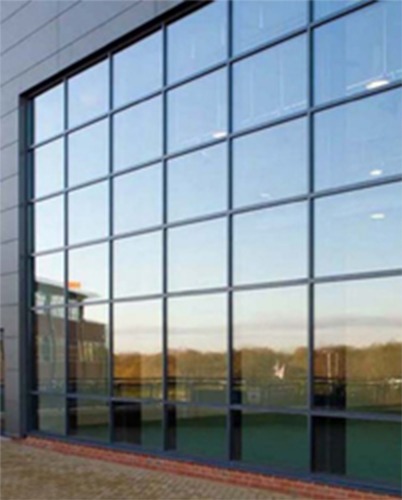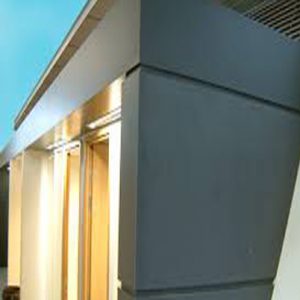Curtain Wall
A curtain wall is a thin, usually aluminum-framed wall, containing infilled with glass, metal panels, or thin stone. The framing is attached to the building structure and does not carry the floor or roof loads of the building. The wind and gravity loads of a curtain wall are transferred to the buildings structure, typically at the floor line.
Description
The Curtain Wall: Revolutionizing Modern Building Design
Curtain walls have become a defining feature in contemporary architecture, offering a blend of functionality, aesthetics, and sustainability. These non-structural outer coverings have transformed the way buildings are designed, allowing for innovative approaches to building envelopes. This article explores the concept, components, benefits, and impact of curtain walls in modern construction.
Understanding Curtain Walls
A curtain wall is a thin, usually aluminum-framed wall containing in-fills of glass, metal panels, or thin stone. Unlike traditional walls that are structural, curtain walls are non-load bearing, meaning they only support their own weight and the forces of wind, rain, and seismic activity. They are attached to the building’s structural frame, typically from the outside, creating a seamless and continuous exterior.
Key Components
- Frame: Typically constructed from lightweight materials such as aluminum, the frame supports the curtain wall and attaches it to the building’s structural framework. The frame must accommodate the infill panels and withstand environmental loads.
- Infill Panels: These panels can be made from various materials, including glass, aluminum, stone, or composite materials. Glass is the most common choice, offering transparency and an elegant aesthetic.
- Anchors and Brackets: These components secure the curtain wall to the building’s structure. They must allow for building movement and expansion without compromising the wall’s integrity.
- Sealants and Gaskets: These elements ensure that the curtain wall is weather-tight, preventing air and water infiltration and providing thermal insulation.
Benefits of Curtain Walls
- Aesthetic Versatility: Curtain walls offer unparalleled design flexibility, enabling architects to create sleek, modern exteriors. The use of glass and other materials can give buildings a unique and appealing look.
- Natural Light: Glass curtain walls allow for extensive natural light penetration, reducing the need for artificial lighting and creating a more pleasant indoor environment.
- Energy Efficiency: Advanced curtain wall systems can significantly enhance a building’s energy efficiency. Features such as double or triple glazing, low-emissivity coatings, and thermal breaks in the frames help reduce heat transfer.
- Structural Lightness: Because curtain walls do not carry structural loads, they can be made from lighter materials, reducing the overall weight of the building and potentially lowering construction costs.
- Durability and Maintenance: High-quality curtain wall systems are designed to be durable and require relatively low maintenance. With proper care, they can last for many years, providing long-term value.
Impact on Modern Architecture
Curtain walls have profoundly influenced modern architecture, enabling the construction of taller and more visually striking buildings. Their ability to create large, uninterrupted expanses of glass has redefined urban skylines and the relationship between indoor and outdoor spaces. Buildings with curtain walls often have a contemporary and cutting-edge appearance, contributing to the dynamic and ever-evolving aesthetic of modern cities.
Challenges and Considerations
Despite their numerous advantages, curtain walls present certain challenges. The initial cost can be higher than traditional building methods due to the need for specialized materials and installation techniques. Ensuring proper thermal performance and weather-tightness requires meticulous design and construction practices.
Architects and engineers must also address potential issues such as thermal bridging, where heat can be conducted through framing materials, and condensation, which can occur on interior surfaces if the system is not properly designed and insulated.
Innovations and the Future
As technology advances, so do curtain wall systems. Innovations in materials, such as electrochromic glass that can change tint to control solar gain, and integrated photovoltaic panels for generating electricity, are pushing the boundaries of what curtain walls can achieve. These developments are paving the way for even more sustainable and energy-efficient building designs.
Conclusion
The curtain wall is a testament to the advancements in architectural design and construction technology. By providing a sleek, versatile, and energy-efficient solution for building exteriors, curtain walls have become an integral part of modern architecture. As materials and technologies continue to evolve, the future of curtain walls promises even greater innovation and sustainability, enhancing the built environment and our interaction with it.


Reviews
There are no reviews yet.